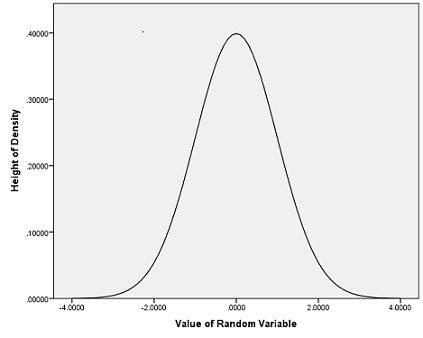Example 9:
| Outcome | Real Number | Probability |
| HH | 2 | 0.25 |
| TH | 1 | 0.25 |
| HT | 1 | 0.25 |
| TT | 0 | 0.25 |
This table defines a function that assigns HH → 2, TH → 1, HT → 2, TT → 0.
A random variable can also be described directly with a probability distribution:
| Outcome | Probability |
|---|---|
| x1 | P(x1) |
| x2 | P(x2) |
| ... | ... |
| xk | P(xk) |
In the case of a random variable that counts the number of heads obtained by flipping two coins:
| x | Probability |
|---|---|
| 0 | 0.25 |
| 1 | 0.50 |
| 2 | 0.25 |
| x | Probability |
|---|---|
| 0 | 0.125 |
| 1 | 0.375 |
| 2 | 0.375 |
| 3 | 0.125 |

If z is a normal random variable with mean 0 and variance 1 (z ∼ N(0, 1)), what is the probability that z ∈ [-0.7, 1.3]? Ans: 0.661 = 66%.
| x | Probability |
|---|---|
| 0 | 1 - p |
| 1 | p |